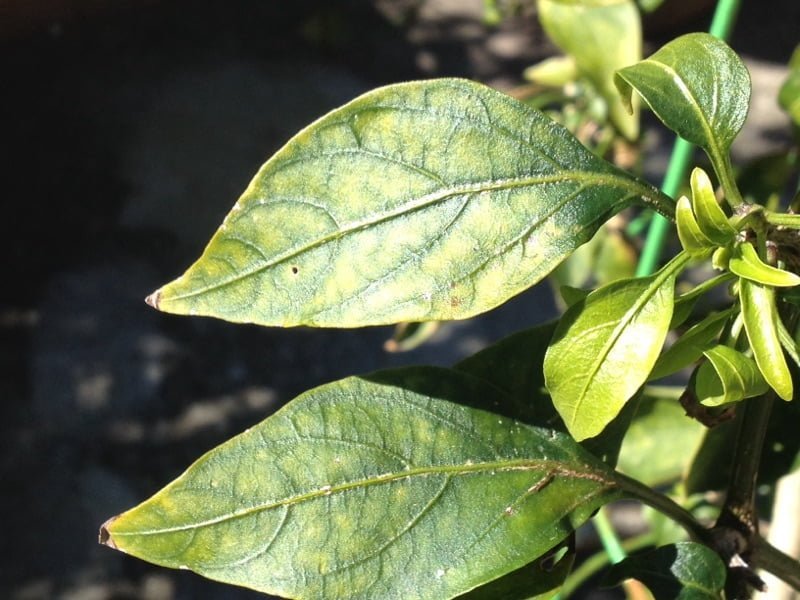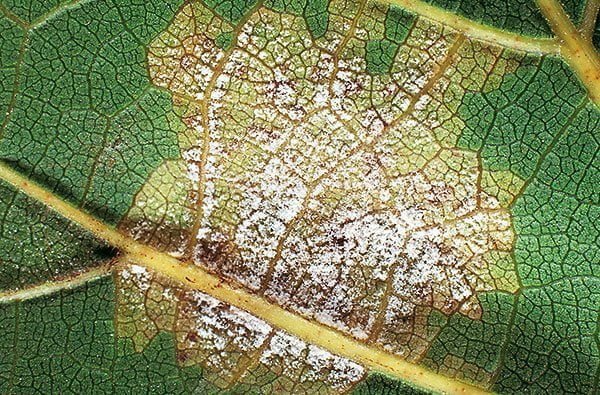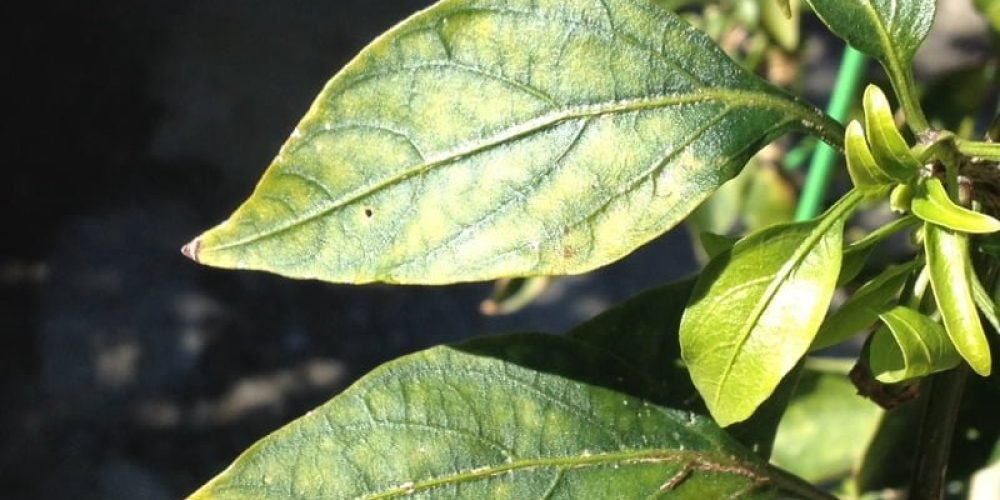
Disease name: Downy mildew on sweet pepper
The scientific name: Perpnospora tabacini
Type of disease: fungal
Disease family: Peronosporaceae
(Sweet pepper plant is infected with downy mildew)
- The causes of disease:
Downy mildew is a type of oomycete fungus or water mold, and it is an obligate parasite that feeds on sweet pepper plants, and is transmitted to it through water, wind, or agricultural tools.
- Symptoms of the disease:
Yellow spots appear on the upper surface of the leaf between the veins of the leaves of the sweet pepper plant. As these spots spread, they eventually turn brown until the leaf becomes completely brown and then falls. Therefore, the plant is exposed to sunburn.
- Disease development cycle:
Downy mildew spores are transmitted on the leaf surface of sweet pepper plants during wet, mild weather. They can also be transmitted by tools or hands that have touched infected plants and were not sterilized before transferring them to a healthy plant. This cycle takes up to four days in suitable weather. But it usually takes 7 to 10 days to infect an entire field before the first symptoms appear.
- Conditions suitable for the spread of the disease:
Oospores germinate at moderate temperatures ranging between 18-25 degrees Celsius and a high relative humidity of no less than 80%.

(Yellow spots appear on the leaves of sweet pepper plants as a result of infection with downy mildew)
- Losses resulting from the spread of the disease:
Downy mildew is considered a serious disease as the plant cannot carry out the process of photosynthesis as a result of the leaves falling. The accumulation of fungi within the plant tissues makes it impossible to transfer water from the roots to the leaves, causing the death of the plant and significant damage to the crop.
- Control:
- Use a fungicide frequently during the growing season when there is high humidity combined with moderate temperatures.
- Remove infected pepper plants and dispose of them away from the field.
- Spraying the crop with copper.
- preventive measures:
- Remove any weeds to improve air circulation in the field.
- Watering in the early morning hours or using drip irrigation.
- Choose disease-resistant varieties.
- Good fertilization of the plant helps in resisting the disease.
- Sterilize agricultural tools before and after use.



